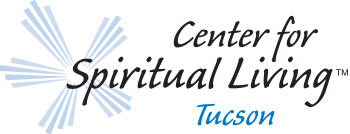 As I write this it is days before our national election. When this is published it will be the day after, and we will be awaiting the results. Whoever wins the election, according to polls, half the country will be disappointed with the outcome. I have been doing CSL’s 100 days of peace for our national election based on Prentis Hemphill’s book, What it Takes to Heal; How Transforming Ourselves Can Change the World. Hemphill presents ten “principles of embodiment” that are the inspiration for the daily prompts. From 100 Days, below are some of the thoughts and prayers:
As I write this it is days before our national election. When this is published it will be the day after, and we will be awaiting the results. Whoever wins the election, according to polls, half the country will be disappointed with the outcome. I have been doing CSL’s 100 days of peace for our national election based on Prentis Hemphill’s book, What it Takes to Heal; How Transforming Ourselves Can Change the World. Hemphill presents ten “principles of embodiment” that are the inspiration for the daily prompts. From 100 Days, below are some of the thoughts and prayers:
1. Vision “We have a vision that’s deep, steep, and deeply rooted in possibility and potential so that whatever happens with our national election, we come to a deep understanding that we are spiritual beings having a human incarnation, meaning that we are resilient. We are resourceful and whatever happens, we’re going to build a kind, just, loving society, compelled by right action.” Day 1, Rev. Dr. Michael Beckwith, Agape
2. Heal “We heal ourselves through mindfulness, intention, and a commitment to change. We can heal ourselves, our communities, and our nation, but we must first truly want to be healed. Healing takes courage. Sometimes we have to dig deep down in our hearts to find the courage to heal.” Day 52. Shahrazad Taylor, SLC-Atlanta, GA
3. Feeling and the Body “Any reflection on your feelings is a moment you can turn into gratitude. Thank rage for reminding that your feeling for justice runs deep. Thank happiness for showing how much you really like the situation you’re in. Thank anxiety for reminding you of your own tenderness and vulnerability… Ultimately, any feeling we have shows us we care and or what we care about today.” Day 43. Jericho Brown, poet.
4. Remapping Relationships (Rewiring) “The practice of rewiring is about shifting our attention. Every time we notice that which is rising up, that old story, that belief system, that judgement, that fear, we say no, and we choose to look at something else; to turn our mind to prayer, to turn to a higher idea, to turn to love, to turn to compassion. We are engaging in a practice of stopping and redirecting our thinking.” Day 44 Rev. Elisha Christopher, CSL Santa Cruz
5. Engage with the World “Breathe in peace, knowing this moment is for you. This is the moment to stretch beyond what you thought was possible and do one more thing for justice, one small action beyond all imagining to bring about the world we dream of. …This is the moment you are called to take your action. The world is calling your name and all you have to do is breathe and answer the call.” Day 65. Rev. Karen Strauss, Unitarian Universalists 6. Expanding our We “in order to form a more perfect universal union, I choose to assist and secure the blessings of life, love, beauty, wisdom, power, joy, and liberty to the posterity of all. I hereby broaden my me to we with a firm acceptance of the protection and power of the divine intelligence within all humanity, and pledge my life to the sacred honor of expanding our we.” Day 66, Rev Dr. Jay Willick, New Though Spiritual Center
7. Things fall apart (Release) Release is our mental, spiritual and emotional exhale. …To actively let go of our attachment to all of those prior experiences, everything that has happened up until now to make some space to invite something different, to invite something new, to acknowledge that something new is possible. Can you make room in consciousness for something bigger, something more joyous and wonderful than you have previously imagined possible? Day 37. Bill Marcion, Spiritual Director @ New Thought Philadelphia
8. Change is a Process “As we move into this space of possibility in our country, as we move into a space of no longer holding on to what was and embracing what can be, that change is truly possible, let us calm our nervous system and trust and know that we are safe in the midst of this change, that even if we feel unsafe, we are here for one another as community, we are here to promote possibility.” Day 48. Rev. Darrell Jones, Soul Gym Focus Ministry
9. Courage “We, my friends, have the God given courage to move through this time because we care so deeply. We care so deeply about each other, our country, and about our shared humanity. …we can together, as a collective, hold the vision of peace in our lifetime. We are made for this love. Let our loving courage lead the way.” Day 99. Shannon O’Hurley, Community Spiritual Leader, New Thought Center, Oswego, OR.
10. Love at the Center “For as long as it takes, look past others’ personality and differences and call upon ourselves to love the divine soul within them. Each of us has come to this planet to expand our consciousness of love. Ad we have the perfect opportunity to do that right now; maybe now more than ever, to practice this higher expression until it simply becomes who we are.” Day 80. Jim Blake, CEO Unity Headquarters.
— Sharon Whealy, RScP












